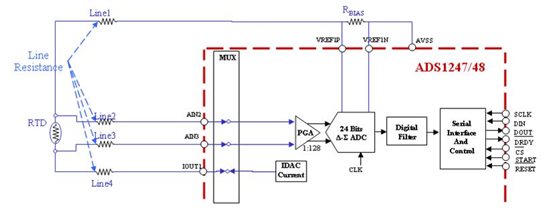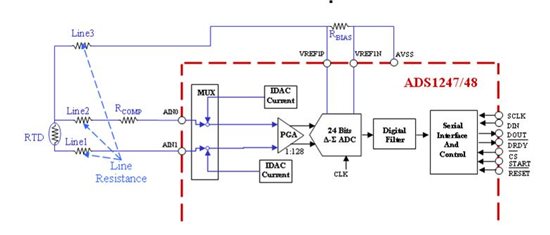Hallo,
I am working with the ASD1248 and have connected three detector RTD (Pt100) .
first Pt100 : Connected from AINo to AIN1 and AIN1 is connected to REFP0. Figure 82(Datasheet)
second Pt100 : connected from Ain2 to AiN3 and AIN3 connected to REFP0.
third Pt100 : connected from Ain4 to AiN5 and AIN5 connected to REFP0.
How should i write the programme to read the temperature of those PT100.
Thanks:



